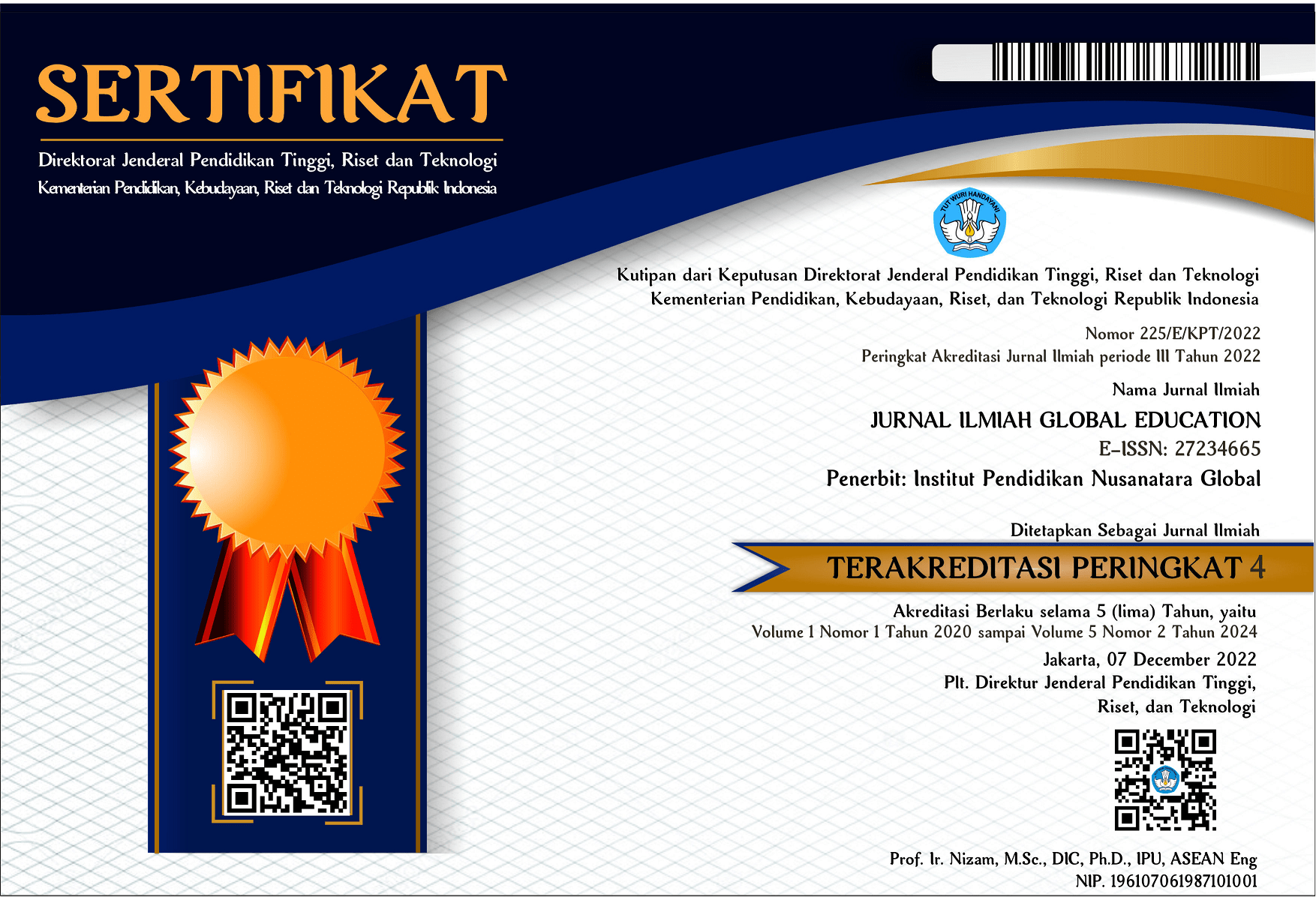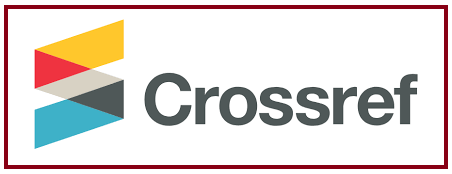PENGARUH TRAIT MINDFULNESS TERHADAP COMPULSIVE BUYING PADA PENGGUNA SHOPEE USIA DEWASA AWAL
DOI:
https://doi.org/10.55681/jige.v4i4.1577Keywords:
Trait Mindfulness, Compulsive Buying, shopping behaviorAbstract
Compulsive buying is a shopping behavior that is carried out by individuals but is detrimental with negative impulses that are carried out repeatedly to eliminate feelings of temporary satisfaction. Therefore, mindfulness is needed for individuals to realize the necessary actions. This study aims to determine the effect of mindfulness on compulsive buying in shopee users in early adulthood. The population in this study are shopee users who are in their early adulthood. The sampling technique used is accidental sampling with a total of 211 participants. The study was conducted using the Edwards Compulsive Buying Scale (ECBS) and The Mindful Attention Awareness Scale (MAAS). The results show that there is an influence of positive mindfulness on compulsive buying, which means that the more individuals have a high mindfulness trait, the more aware they will be of the psychological condition they are experiencing, in this case the difficulties they experience, so they find ways to reduce the pressure by compulsive buying behavior temporary.
Downloads
References
Adler, R., B., & Rodman, G. (2009). Understanding human communication. New York: Holt, Rinehart and Winston
Alika, R. (2021, 15 November). Bukan korupsi, hasil survey ungkap ekonomi masalah utama RI saat ini. Kata Data. Dikutip dari https://katadata.co.id/maesaroh/berita/61928487474f8/bukan-korupsi-hasil-survei-ungkap-ekonomi-masalah-utama-ri-saat-ini
Amalia, A. (2020). Hubungan approval seeking dan avoidance coping terhadap compulsive buying pada mahasiswa UIN Sunan Ampel Surabaya. Skripsi. UIN Sunan Ampel Surabaya.
Annisa, D. F., & Ifdil, I. (2016). Konsep Kecemasan (Anxiety) pada Lanjut Usia (Lansia). Konselor, 5(2), 93. https://doi.org/10.24036/02016526480-0-00.
Azwar, S. (2016). Penyusunan skala psikologi. Yogyakarta: Pustaka Pelajar.
Azwar, S. (2018). Metode penelitian psikologi. Yogyakarta: Pustaka Pelajar.
Baer, R. A., Smith, G. T., Lykins, E., Button, D., Krietemeyer, J., Sauer, S., Walsh, E., Duggan, D., & Williams, J. M. G. (2008). Construct validity of the five facet mindfulness questionnaire in meditating and nonmeditating samples. Assessment, 15(3), 329- 342. https://doi.org/10.1177/1073191107313003.
Baumgartner, H., Pieters, R., Haugtvedt, C., Herr, P., & Kardes, F. (2008). Goal-directed consumer behavior. Handbook of consumer psychology, 367-92.
Blackburn, M., I. & Davidson, M.,K. (1994). Terapi kognitif untuk depresi dan kecemasan suatu petunjuk bagi praktisi. Alih Bahasa: Rusda Koto Sutadi. Semarang: IKIP Semarang Press.
Brown, K. W., & Ryan, R. M. (2003). The benefits of being present: Mindfulness and its role in psychological well-being. Journal of Personality and Social Psychology, 84(4), 822–848. https://doi.org/10.1037/0022-3514.84.4.822.
Chuah, S. C., Ng, P. L., & Khan, N. R. M. (2018). Compulsive online shopping in Malaysia. Advances in Business Research International Journal, 4(2), 1-8. https://doi.org/10.24191/abrij.v4i2.9976
Creswell, J. (2019). Reseacrh design: pendekatan metode kualitatif, kuantitatif, dan campuran. Edisi IV. Yogyakarta: Pustaka Pelajar.
CNN Indonesia. (7 Juli 2020). Belanja Online Naik 400 Persen Saat Musim Corona. Dikutip https://www.cnnindonesia.com/ekonomi/20200707172450-92- 521925/belanja-online-naik-400-persen-saat-musim-corona.
Choliz, M. (2012). Mobile-phone addiction in adolescence: the test of mobile phone dependence (TMD). Progress in health sciences, 2(1), 33-44.
Danesh Mirkohan, R., Taklavi, S., & Kazemi, R. (2021). The effectiveness of acceptance and commitment therapy on emotional self- control , emotional flexibility , and the valued living among women with compulsive buying disorder. Salāmat-i Ijtim (Community Health), 8(3), 427–430. http://journals.sbmu.ac.ir/ch
Darrat, A. A., Darrat, M. A., & Amyx, D. (2016). How impulse buying influences compulsive buying: The central role of consumer anxiety and escapism. Journal of Retailing and Consumer Services, 31, 103-108. https://doi.org/10.1016/j.jretconser.2016.03.009.
Dianka, A., A. (2021, 6 September). Performa e-commerce: shopee, si paling laris tahun ini. Dikutip dari https://www.trenasia.com/performa-e-commerce-shopee-si-paling-laris-tahun-ini.
de Mattos, C. N., Kim, H. S., Filomensky, T. Z., & Tavares, H. (2019). Development and validation of the compulsive-buying follow-up scale: A measure to assess treatment improvements in compulsive buying disorder. Psychiatry Research, 282, 112009. https://doi.org/10.1016/j.psychres.2018.12.078
Edwards, E. A. (1993). Development of a new scale for measuring compulsive buying behavior. Financial counseling and planning, 4(1), 67-84.
Ekasari, S. R. (2019). Hubungan antara self esteem dengan compulsive buying pada mahasiswi dewasa awal universitas mercu buana yogyakarta. Skripsi. Universitas Mercu Buana Yogyakarta.
Febriansyah, A, A. (2021, 4 Februari). Shopee juarai e-commerce terbanyak digunakan masyarakat pada kuartal empat 2021. Dikutip dari https://jurnalmakassar.pikiran-rakyat.com/berita/pr-823645396/shopee-juarai-e-commerce-terbanyak-digunakan-masyarakat-pada-kuartal-empat-2021.
Felicia, F., Elvinawaty, R., & Hartini, S. (2014). Kecenderungan pembelian kompulsif: peran perfeksionisme dan gaya hidup hedonistik. Psikologia: Jurnal Pemikiran dan Penelitian Psikologi, 9(3).
Handoko, H., & Swasta, B. (2000). Manajemen pemasaran analisis perilaku konsumen. Yogyakarta: BPEE.
Henry (2020, 8 Maret). Cerita akhir pekan: strategi menyelamatkan pariwisata indonesia dari dampak corona. Liputan 6. Dikutip dari https://www.liputan6.com/lifestyle/read/4196055/cerita-akhir-pekan-strategi-menyelamatkan-pariwisata-indonesia-dari-dampak-corona.
HIMPSI. (2010). Kode etik psikologi indonesia. Jakarta: Pengurus Pusat Himpunan Psikologi Indonesia.
Kepegawaian UMA. (2021, 28 September). Pengertian perilaku ekonomi. Dikutip dari https://kepegawaian.uma.ac.id/pengertian-perilaku-ekonomi/#:~:text=Teori%20yang%20menerapkan%20pengertian%20perilaku,pilihan%20yang%20tersedia%20bagi%20mereka.
Koran, L. M., Faber, R. J., Aboujaoude, E., Large, M. D., & Serpe, R. T. (2006). Estimated prevalence of compulsive buying behavior in the United States. American Journal of Psychiatry, 163(10), 1806-1812. https://doi.org /10.1176/ajp.2006.163.10.1806
Langelo, W., Oroh, C., & Mondigir, M. (2021). Manajemen stres mindfulness terhadap tingkat kecemasan tenaga kesehatan dimasa pandemi covid-19. Jurnal Ilmu Keperawatan Jiwa, 4(4), 725–732.
Latifah, T. N. (2021). Hubungan antara mindfulness trait dan kualitas hidup pada orang tua yang memiliki anak autis. Skripsi. Fakultas Psikologi, Universitas Muhammadiyah Malang.
Lidwina, A. (2021, 6 Juni). Pengguna e-commerce Indonesia tertinggi di dunia. Dikutip dari https://databoks.katadata.co.id/datapublish/2021/06/04/penggunaan-e-commerce-indonesia-tertinggi-di-dunia.
Maharani, E. A. (2016). Pengaruh pelatihan berbasis mindfulness terhadap tingkat stres pada guru paud. Jurnal Penelitian Ilmu Pendidikan. 9(2), 100–110. https://doi.org/10.21831/jpipfip.v9i2.12919
Muchnisa, F., & Sulaiman, S. (2020). Pengaruh pembelian impulsif terhadap kecemasan konsumen yang berdampak pada pembelian kompulsif dan dimediasi oleh eskapisme (studi kasus pada matahari departement store di banda aceh). Jurnal Ilmiah Mahasiswa Ekonomi Manajemen, 5(1), 236-249. https://doi.org/10.24815/jimen.v5i1.9151
Rizal, G. L. (2019). Pengaruh program psikoterapi berbasis mindfulness dalam menurunkan kecemasan pasien penyakit. Jurnal RAP (Riset Aktual Psikologi), 10(2), 158–170. https://doi.org/10.24036/rapun.v10i2.106253
Safaria, T., & Saputra., N. E. (2012). Manajemen emosi: sebuah panduan cerdas bagaimana mengelola emosi positif dalam hidup anda. Jakarta: Bumi Aksara.
Samson, A. (2021). The Behavioral Economics Guide 2021 (with an Introduction by John List). Diakses pada https:// www.behavioraleconomics.com/be-guide/.
Semanat, N. S., & Mokhlis, S. (2019). Hubungan antara Kepimpinan Fesyen, Kecenderungan Pembelian Kompulsif dan Ketagihan Membeli-Belah Dalam Talian: The Relationships between Fashion Leadership, Compulsive Buying Tendency and Online Shopping Addiction. Journal of Management and Muamalah, 9(2), 101-109.
Santrock, J, W, (2011). Life-Span Development (Perkembangan Masa Hidup) Jakarta: Penerbit Erlangga.
Sari, R. K. (2016). Kecenderungan Perilaku Compulsive Buying Pada Masa Remaja Akhir di Samarinda. Psikoborneo: Jurnal Ilmiah Psikologi, 4(1). http://dx.doi.org/10.30872/psikoborneo.v4i1.3923.
Sarwono, J. (2006). Metode penelitian kuantitatif dan kualitatif. Yogyakarta: Graha Ilmu.
Siregar, S. (2013). Statistik Parametrik Untuk Penelitian Kuantitatif. Jakarta: Bumi Aksara.
Solomon, M. R. (2017). Costumer behavior: buying, having, and being. New Jersey: Prentice Hall.
Soo, C., Tate, R. L., & Lane-Brown, A. (2011). A Systematic review of Acceptance and Commitment Therapy (ACT) for managing anxiety: Applicability for people with Acquired. Brain Injury? Brain Impairment. 12(1), 54-70. https://doi.org/10.1375/brim.12.1.54
Syahroni, I. (2021). Pengaruh Self Eteem dan Kecemasan Terhadap Compulsive Buying (Survei online pada masyarakat Kota Malang yang menggunakan masker surgical mask sebagai alat perlindungan diri dari Covid-19). Skripsi. Universitas Brawijaya).
Sugiyono. (2017). Metode Penelitian Kuantitatif, Kualitatif, R&D. Bandung: Alfabeta.
Waty, L. P., & Fourianalistyawati, E. (2018). Dinamika kecanduan telepon pintar (smartphone) pada remaja dan trait mindfulness sebagai alternatif solusi. Seurune: Jurnal Psikologi Unsyiah, 1(2), 84-101. https://doi.org/10.24815/s-jpu.v1i2.11573.
Weinstein, N., Brown, K. W., & Ryan, R. M. (2009). A multi-method examination of the effects of mindfulness on stress attribution, coping, and emotional well-being. Journal of research in personality, 43(3), 374-385.
Workman, L. (2010). The essential structure of compulsive buying: A phenomenological inqury. Disertasi. Management Information System, Utah State University.
World Health Organization. (27 Agustus 2020). World mental health day: an opportunity to kick-start a massive scale-up in investment in mental health. Dikutip https://www.who.int/news/item/27-08-2020-world-mental-health-day-an-opportunity-to-kick-start-a-massive-scale-up-in-investment-in-mental-health
Yehoshua, R. (2009). Kecenderungan perilaku membeli kompulsif (compulsive buying) pada wanita dewasa muda yang bekerja dan belum menikah: sebuah studi deskriptif. Skripsi. Universitas Sanata Dharma: Yogyakarta.
Young, B. M. (2018). Consumer psychology. Switzerland: Palgrave Macmilan.
Amru, M. F., & Ambarini, T. K. (2021). Hubungan antara Trait Mindfulness dan Kesepian pada Orang Dewasa Awal. Buletin Riset Psikologi dan Kesehatan Mental, 1(2), 1064-1074.
Brown, K. W., & Ryan, R. M. (2003). The benefits of being present: Mindfulness and its role in psychological well-being. Journal of Personality and Social Psychology, 84(4), 822.
Greenberg, J., Reiner, K., & Meiran, N. (2012). “Mind the trap”: mindfulness practice reduces cognitive rigidity. PloS one, 7(5), e36206.
Sternberg, R. J. (2000). Images of mindfulness. Journal of Social Issues, 56(1), 11-26.
Downloads
Published
How to Cite
Issue
Section
License
Copyright (c) 2023 JURNAL ILMIAH GLOBAL EDUCATION

This work is licensed under a Creative Commons Attribution-ShareAlike 4.0 International License.













